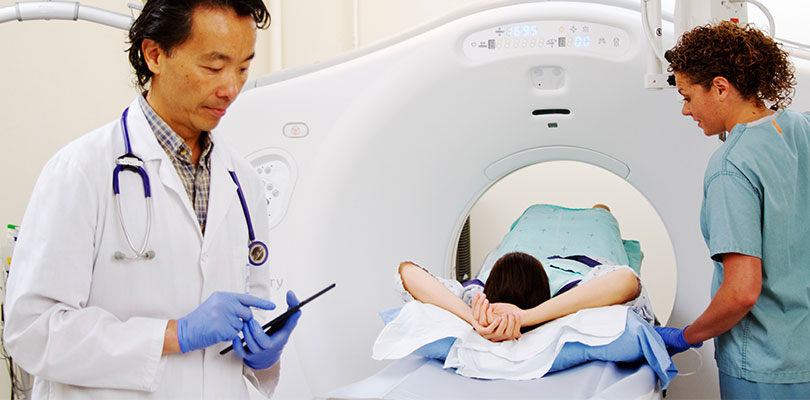From Fatty Liver to Cancer
The health of our liver is pivotal to the overall well-being of our bodies, but many of us are unaware of the warning signs indicating that this vital organ may be under duress. Non-Alcoholic Steatohepatitis (NASH), a condition that can significantly harm liver function, has also been linked to an increased risk of cancer. In this article, we will explore the warning signs of liver damage, the nature of NASH, its causes, risk factors and the link between NASH and cancer. We will also discuss treatment options, including Rezdiffra which is used to treat individuals with NASH who have moderate to advanced liver scarring.
Warning Signs of Liver Damage
1. Jaundice
This condition presents as a yellowing of the skin or the whites of the eyes. It happens when bilirubin, a yellow pigment from the breakdown of old red blood cells, builds up in the body because the liver is not processing it adequately.
There are over 120 types of brain tumors. The most common types include acoustic neuroma, chordoma, brain stem glioma and more.
2. Abdominal Pain and Swelling
Pain or discomfort in the upper right side of the abdomen could indicate liver damage. This area might also become swollen due to fluid accumulation, a condition known as ascites.
3. Itchy Skin
The accumulation of bile salts under the skin due to a struggling liver can lead to persistent itching.
4. Swelling in Legs and Ankles
Liver damage can cause fluid retention, leading to swollen legs and ankles.
5. Dark Urine
When the liver doesn't function correctly, urine can become unusually dark due to high levels of bilirubin being excreted through the kidneys.
6. Pale Stool
A healthy liver releases bile into the stool, giving it a normal brown color. If the liver is not working well, the stool may be pale or clay-colored.
7. Fatigue
Excessive tiredness and weakness are common symptoms of liver dysfunction, often due to the body's struggle to perform metabolic activities effectively.
8. Nausea and Vomiting
Liver problems can disrupt digestive functions, causing nausea and vomiting.
9. Lack of Appetite
A lack of appetite can be associated with liver disease and may lead to weight loss.
10. Bruising Easily
A damaged liver produces fewer proteins necessary for blood clotting, resulting in easy bruising or excessive bleeding.
What Is Non-Alcoholic Steatohepatitis (NASH)?
NASH is the more severe form of non-alcoholic fatty liver disease (NAFLD), characterized by an accumulation of fat in the liver, inflammation and liver cell damage. Unlike alcoholic liver disease, which is caused by excessive alcohol consumption, NASH develops in people who drink little to no alcohol.
Causes and Risk Factors
While the exact cause of NASH is not entirely understood, several factors increase the risk of developing this condition:
- Obesity, particularly when fat is concentrated in the abdomen.
- Insulin resistance, leading to type 2 diabetes and prediabetes.
- High cholesterol and high levels of triglycerides in the blood.
- Metabolic syndrome – a combination of hypertension, obesity, insulin resistance and dyslipidemia.
- Polycystic ovary syndrome (PCOS).
- Sleep apnea.
- Underactive thyroid (hypothyroidism).
- Underactive pituitary gland (hypopituitarism).
Link Between Non-Alcoholic Steatohepatitis and Cancer
NASH can progress to cirrhosis, where the liver becomes scarred and permanently damaged. Cirrhosis can lead to liver failure and increase the risk of liver cancer, specifically hepatocellular carcinoma (HCC). Recent studies have demonstrated a strong link between advanced NASH and the development of HCC. Individuals with NASH are at a higher risk of developing other types of cancer as well, likely due to chronic inflammation, which is a known contributor to cancer development.
Treatment Options for Non-Alcoholic Steatohepatitis
Generally, a combination of lifestyle changes and treatments can help manage the condition. Here are some common treatment methods for NASH.
- Weight loss: Losing weight can reduce fat in the liver, decrease inflammation and improve fibrosis. A weight loss of three to five percent can reduce fat, while a seven to ten percent loss is necessary for improving NASH progression.
- Managing blood sugar: Controlling blood sugar levels through diet, medications or insulin can improve insulin resistance and NASH.
- Diet: Adopting a balanced, healthy diet rich in fruits, vegetables, whole grains and lean proteins can help manage NASH. Limiting saturated fats, added sugars and refined carbohydrates is key.
- Exercise: Regular physical activity can help decrease liver fat and combat NASH. Aim for at least 30 minutes of moderate exercise on most days of the week.
- Rezdiffra: Rezdiffra (resmetirom) is a new medication used to treat adults with NASH who also have liver scarring. It acts as a partial agonist on the thyroid hormone receptor-beta (THR-beta), the primary thyroid hormone receptor in the liver. Its mechanism involves stimulating this receptor, leading to a reduction in triglyceride levels within the liver.
From Inflammation to Oncogenesis
Non-Alcoholic Steatohepatitis is a silent, but potentially severe, liver disease with clear warning signs that, if unheeded, could lead to liver damage and an increased risk of cancer, particularly liver cancer. Proactive monitoring and early intervention are critical in managing NASH and mitigating associated health risks. If you are experiencing the warning signs of liver damage, it is essential to seek medical attention for proper assessment and management.







